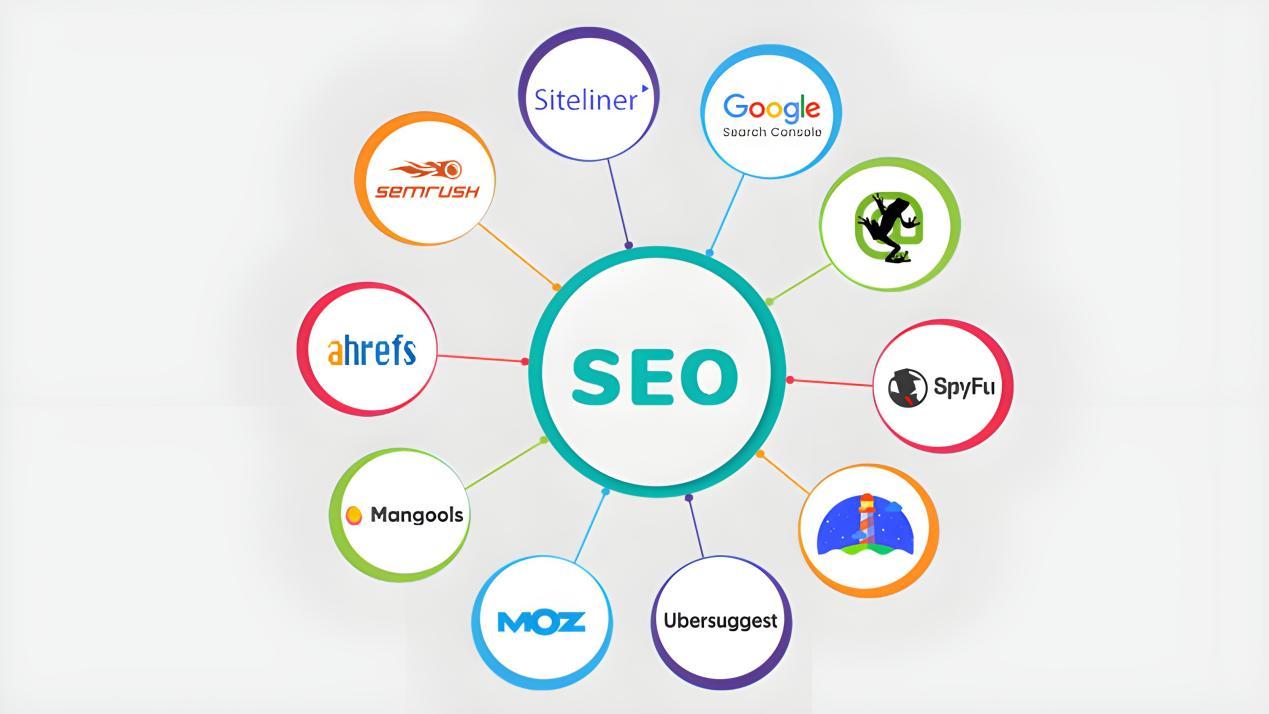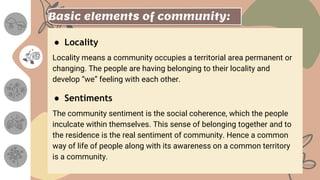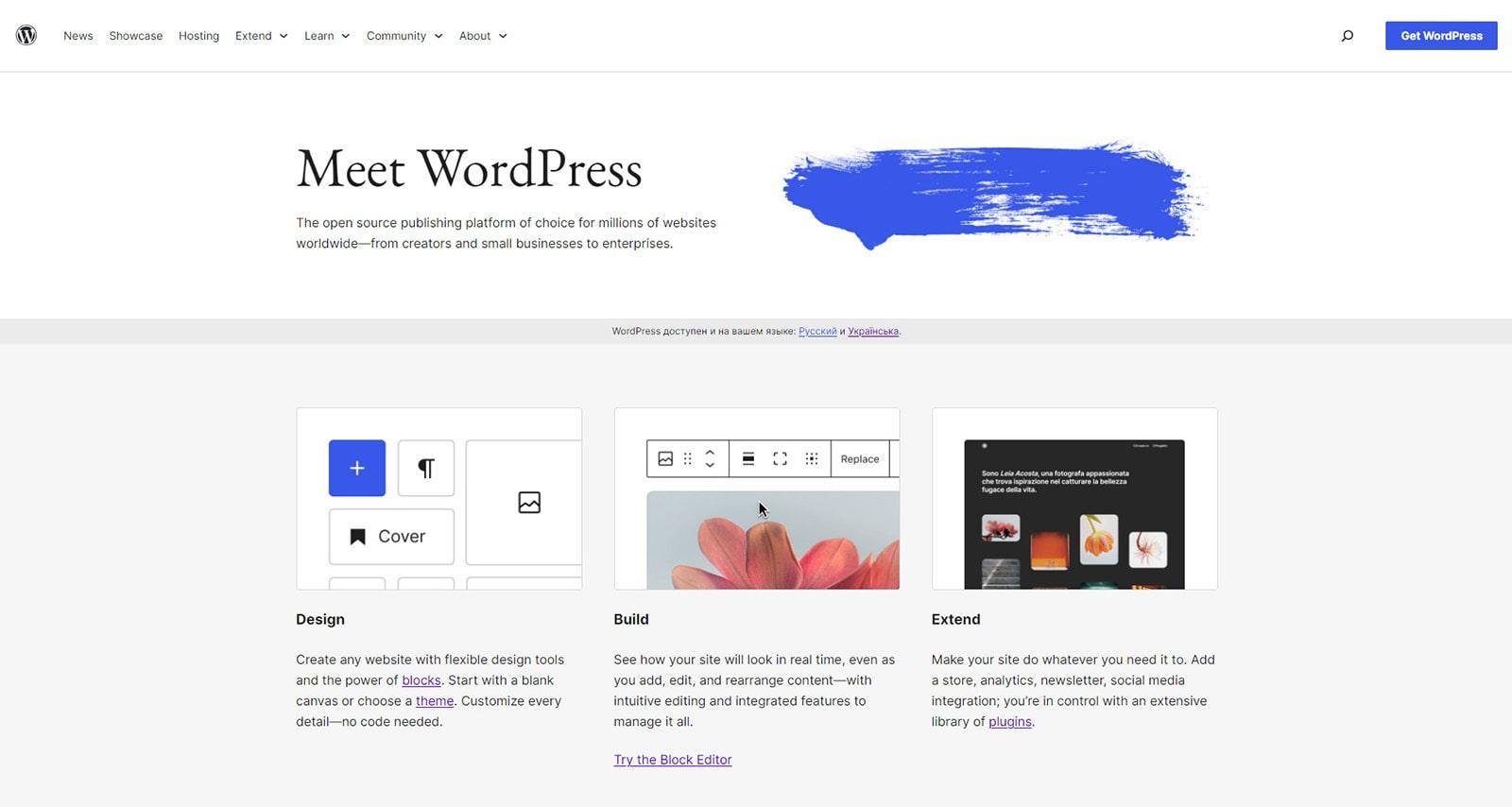Are you itching to share your thoughts, expertise, or creative ideas with the world but don’t know where to start? We’ve all been there! With countless options out there, selecting the right blog platform can feel overwhelming, especially if you’re not ready to invest a ton of money. Thankfully, you don’t have to break the bank to launch your blogging journey. In this article, we’ll explore the top 15 free blog platforms for 2025, each offering unique features to help you create, customize, and grow your online presence. Whether you’re a seasoned writer or just dipping your toes into the blogging waters, we’ve got the perfect platform to suit your needs. So, let’s dive in and find the best free blog platform for you!
Choosing the Right Free Blog Platform for Your Needs
When embarking on your blogging journey, choosing the right free platform can feel overwhelming. With so many options available, it’s crucial to weigh your specific needs against what each platform offers. Are you looking for customization, ease of use, or community engagement? The right choice can significantly impact your blogging experience and growth.
Here are some key factors to consider when selecting a free blog platform:
- User-Friendly Interface: A simple and intuitive user interface will make it easier for you to focus on creating content rather than navigating complex features.
- Customization Options: Depending on your brand or personal style, the ability to customize your blog’s appearance and functionality can help you stand out.
- Community and Support: Platforms with active communities can provide valuable support as you grow. Look for forums, tutorials, or customer support options.
- Monetization Opportunities: If you plan to monetize your blog in the future, choose a platform that allows for ad placements or affiliate links.
- SEO Capabilities: A platform with good SEO tools can enhance your visibility in search engines, helping more readers find your blog.
To give you a clearer picture, let’s compare some popular free blogging platforms based on these criteria:
| Platform | User-Friendly | Customization | Community Support | Monetization |
|---|---|---|---|---|
| WordPress.com | ⭐️⭐️⭐️⭐️⭐️ | ⭐️⭐️⭐️⭐️ | ⭐️⭐️⭐️⭐️⭐️ | ⭐️⭐️⭐️ |
| Blogger | ⭐️⭐️⭐️⭐️ | ⭐️⭐️⭐️ | ⭐️⭐️⭐️ | ⭐️⭐️⭐️⭐️ |
| Wix | ⭐️⭐️⭐️⭐️⭐️ | ⭐️⭐️⭐️⭐️⭐️ | ⭐️⭐️⭐️ | ⭐️⭐️ |
| Medium | ⭐️⭐️⭐️⭐️⭐️ | ⭐️ | ⭐️⭐️⭐️⭐️ | ⭐️ |
Choosing the right platform is ultimately about aligning the features with your goals. If you’re a beginner eager to share stories, a platform with a robust community like WordPress might be your best bet. On the other hand, if aesthetics are your priority, consider Wix for its creative flexibility.
Take your time to explore different platforms, read user reviews, and even try out a few before committing. Remember, the best platform for you is the one that empowers your voice and helps you connect with your audience.

Unpacking the Top Features of Free Blogging Sites
When it comes to choosing a free blogging site, understanding the standout features can make all the difference in your blogging journey. Here’s a close look at what sets these platforms apart, helping you pick the one that best suits your needs.
User-Friendly Interface: The best free blogging platforms prioritize simplicity, ensuring that even beginners can navigate without hassle. Features like drag-and-drop editors, customizable templates, and straightforward dashboards make it easy to create and manage your blog.
Customization Options: Personalization is key for bloggers looking to express their unique voice. Many free platforms offer a variety of themes and layouts, allowing users to customize fonts, colors, and backgrounds. This flexibility ensures your blog not only reflects your style but also stands out in a crowded digital space.
SEO Tools: Search engine optimization is vital for attracting readers. Top free blogging sites integrate built-in SEO tools that help optimize your content for search engines. Features like keyword suggestions, meta tags, and analytics can enhance your blog’s visibility and traffic.
Community Support: Joining a blogging platform often means becoming part of a larger community. Some sites offer forums, comment sections, and social media integration, where you can connect with fellow bloggers, share advice, and gain inspiration. This sense of community can be invaluable for both novice and experienced bloggers.
Monetization Potential: If your goal is to turn your blog into a source of income, consider platforms that provide monetization options. Many free blogging sites allow for affiliate marketing, ad placements, and even sponsored posts, making it easier to generate revenue from your content.
Mobile Responsiveness: In today’s digital age, readers often access blogs on mobile devices. The best free blogging platforms ensure that your blog is mobile-friendly, offering responsive themes that look great on smartphones and tablets. This feature not only enhances user experience but can also improve SEO rankings.
| Feature | Importance |
|---|---|
| User-Friendly Interface | Essential for novice bloggers |
| Customization Options | Helps in personal branding |
| SEO Tools | Crucial for attracting traffic |
| Community Support | Provides networking opportunities |
| Monetization Potential | Allows for income generation |
| Mobile Responsiveness | Enhances user experience |

Exploring User-Friendliness and Customization Options
When it comes to selecting the right free blog platform, user-friendliness and customization options are two critical factors that can significantly impact your blogging experience. A user-friendly interface allows you to focus on creating content rather than struggling with complex navigation or technical issues. Most free platforms strive to provide intuitive designs, but they can vary widely in how easy they are to use.
For instance, platforms like WordPress.com and Blogger are renowned for their straightforward dashboards. They offer drag-and-drop features that make it easy for even the most novice users to set up and manage their blogs. In contrast, other platforms may require a steeper learning curve, which can be a deterrent for those looking to start blogging quickly.
Customization is equally important, as it allows you to craft a unique identity for your blog. Some platforms offer a limited selection of themes and templates, while others provide extensive libraries with the ability to modify design elements. For example, Wix and Squarespace shine in this area, offering beautiful templates that can be tailored to reflect your brand. Meanwhile, free platforms may restrict customization options unless you upgrade to paid plans.
Let’s take a look at a quick comparison of popular platforms based on user-friendliness and customization:
| Platform | User-Friendliness | Customization Options |
|---|---|---|
| WordPress.com | ⭐⭐⭐⭐⭐ | ⭐⭐⭐⭐ |
| Blogger | ⭐⭐⭐⭐ | ⭐⭐⭐⭐ |
| Wix | ⭐⭐⭐⭐⭐ | ⭐⭐⭐⭐⭐ |
| Medium | ⭐⭐⭐⭐⭐ | ⭐⭐ |
In addition to ease of use and customization, consider the support and community surrounding each platform. A robust community can provide valuable resources, tips, and troubleshooting assistance, enhancing your overall blogging journey. Platforms with a strong user base, like WordPress and Blogger, often have extensive forums and online groups where you can seek help and inspiration.
Ultimately, the choice of a blogging platform should align with your personal goals and preferences. Whether you prioritize a simple setup or the ability to create a unique, personalized space, understanding the user-friendliness and customization capabilities of each platform can guide you in making an informed decision.
Evaluating Storage and Bandwidth Limits for Bloggers
When selecting a free blog platform, one of the crucial aspects to consider is the storage and bandwidth limits that each option offers. These factors dictate how much content you can upload, the number of visitors your blog can handle, and ultimately, the growth potential of your blog. To make an informed choice, let’s break down what to look for.
Storage Limits
Free blogging platforms typically provide various storage limits, which can affect everything from the number of images you can upload to the length of your posts. Here’s a quick run-through of what you might find:
- Minimal Storage: Some platforms offer a very limited amount of storage, suitable for simple text posts but not great if you plan on sharing multimedia content.
- Moderate Storage: Many platforms provide decent storage that allows you to incorporate images and videos without worrying too much.
- Generous Storage: A few platforms stand out by offering unlimited storage, giving you the freedom to be creative without the constant concern of hitting a cap.
Bandwidth Considerations
Bandwidth refers to the amount of data that can be transferred to and from your blog. This affects how many visitors you can accommodate and how quickly your content loads. Here’s how bandwidth can vary:
- Low Bandwidth: Ideal for small blogs with few visitors, but you’ll hit limits very quickly as your audience grows.
- Medium Bandwidth: Best for moderate traffic levels; it allows for a healthy flow of visitors while keeping load times reasonable.
- High or Unlimited Bandwidth: The best option for bloggers who anticipate high traffic or plan on launching viral content.
To give you a clearer picture, here’s a simple comparison table of storage and bandwidth limits for popular free blogging platforms:
| Platform | Storage Limit | Bandwidth |
|---|---|---|
| WordPress.com | 3 GB | Free Plan: Limited |
| Blogger | 15 GB (shared with Google) | Unlimited |
| Wix | 500 MB | 1 GB/month |
| Medium | Unlimited | Unlimited |
As you evaluate these limits, think about your blogging goals. If you envision a blog rich in photos and videos, prioritize platforms that offer generous storage and bandwidth. On the flip side, if you’re focusing primarily on text-based content and expect modest traffic, a platform with lower limits may suffice.
Ultimately, understanding the storage and bandwidth constraints of a blogging platform helps you avoid the frustration of running out of space or experiencing slow load times. Choose wisely, and you’ll be paving the way for a successful blogging journey!

The Importance of SEO Tools in Your Blogging Journey
When embarking on your blogging journey, leveraging the right SEO tools can make a significant difference in your visibility and success. These tools help you optimize your content, ensuring it reaches your target audience effectively. With the right strategies, you can enhance your blog’s performance, driving traffic and engagement.
Keyword Research is one of the fundamental aspects of SEO that every blogger should master. By using tools like Google Keyword Planner or Ubersuggest, you can discover what terms your audience is searching for. This allows you to tailor your content to meet their needs, increasing your chances of appearing in search results.
Another essential component is on-page optimization. Tools like Yoast SEO for WordPress provide real-time feedback on how well your content is optimized. They analyze elements like keyword usage, meta tags, and readability, guiding you to create compelling posts that resonate with both readers and search engines.
Additionally, keeping track of your blog’s performance is crucial. Analytics tools, such as Google Analytics, offer insights into your audience’s behavior, helping you understand which posts perform best and where there’s room for improvement. This data-driven approach allows you to refine your strategy over time.
Don’t overlook the importance of backlink analysis. Tools like Moz and Ahrefs can help you identify potential sites for guest blogging or collaborations, boosting your link-building efforts. Strong backlinks are vital for improving your blog’s authority and ranking on search engines.
Incorporating these SEO tools into your blogging process not only enhances the quality of your content but also establishes your blog as a credible source in your niche. By staying informed and proactive, you can navigate the competitive landscape of blogging with confidence.

Connecting with Your Audience through Community Features
Engaging with your readership goes beyond merely sharing blog posts; it’s about fostering a community. This is where the community features of blogging platforms come into play, allowing you to create a vibrant space for interaction and connection. By utilizing tools such as comments, forums, and social sharing, you can transform your blog from a static page into a lively hub of discussion.
Many free blog platforms offer community features that can help you achieve this. Consider the following elements:
- Comment Sections: Enable readers to leave feedback, share their thoughts, and engage with each other. Active comment sections can generate discussions that keep visitors coming back.
- Discussion Boards: Platforms like WordPress allow you to set up forums where visitors can start discussions, ask questions, and build relationships.
- Social Media Integration: Sharing blog posts on social media increases visibility and encourages readers to interact beyond your blog.
- Newsletter Sign-ups: Collecting emails fosters a sense of belonging and enables direct communication with your community.
Choosing a blogging platform that excels in these community features is crucial for building connections. Below is a comparison table that highlights some options:
| Platform | Comment Feature | Forums | Social Sharing |
|---|---|---|---|
| WordPress | Yes | Yes (with plugins) | Easy integration |
| Blogger | Yes | No | Limited |
| Wix | Yes | No | Easy integration |
| Medium | Yes | No | Yes |
As you weigh your options, think about how each platform fits with your goals for audience engagement. A platform that allows for robust discussions will not only enhance the user experience but also deepen relationships with your readers. Don’t shy away from asking questions in your posts or encouraging readers to share their experiences; this promotes inclusivity and keeps the conversation flowing.
Moreover, consider incorporating polls or surveys to gauge your audience’s interests. Platforms that support these features can significantly enrich your content strategy. Use the feedback to tailor your posts, ensuring they resonate with what your community truly cares about.
Monetization Opportunities: Earning While You Blog
Blogging isn’t just about sharing your thoughts and experiences; it also opens up exciting avenues for monetization. If you’re looking to turn your passion into profit, there are several viable strategies you can adopt. Whether you’re a newbie or a seasoned blogger, understanding how to monetize your blog can significantly enhance your earning potential.
One of the most popular methods to earn income is through affiliate marketing. This involves promoting products or services related to your niche and earning a commission for every sale made through your referral link. Here are a few tips to effectively implement affiliate marketing:
- Choose the right products: Select items that resonate with your audience.
- Be genuine: Only promote products you trust to maintain credibility.
- Utilize honest reviews: Engaging reviews can drive traffic and conversions.
Another great way to generate income is through advertisements. Using platforms like Google AdSense, you can display ads on your blog and earn money based on clicks or impressions. This method requires minimal effort, making it a great option for beginners. Consider these factors when incorporating ads:
- Ad placement: Ensure ads are strategically placed without disrupting user experience.
- Targeted ads: Use contextual advertising to ensure relevance to your audience.
If you have a dedicated following, sponsored posts can be a lucrative option. Brands often seek bloggers to promote their products to specific audiences. Here’s how to maximize this opportunity:
- Build a niche audience: The more targeted your audience, the more valuable your blog becomes to brands.
- Negotiate rates: Don’t hesitate to ask for fair compensation based on your reach and engagement.
Lastly, consider offering premium content. This could include eBooks, online courses, or exclusive member-only content. By providing additional value, you can create an additional revenue stream while also enhancing your readers’ experience. Here’s a simple table to help you decide which type of premium content to offer:
| Content Type | Target Audience | Potential Earnings |
|---|---|---|
| eBooks | General readers | Up to $100 per sale |
| Online Courses | Professionals | $50 – $500 per course |
| Membership Content | Dedicated followers | Monthly subscriptions |
By exploring these monetization opportunities, you can cultivate a blog that not only shares your passion but also supports you financially. The key is to remain authentic, provide genuine value, and adapt to your audience’s needs. Start experimenting with these strategies today, and watch your blog transform into a source of income!

Mobile Responsiveness: Why It Matters for Your Blog
In today’s digital landscape, mobile responsiveness is no longer just a nice-to-have feature; it’s a necessity. With the overwhelming majority of users accessing blogs and websites via their smartphones, having a mobile-friendly design can significantly impact your blog’s success. When your content is easily viewable on mobile devices, you’re not just enhancing user experience; you’re also boosting your SEO rankings.
Here are a few reasons why mobile responsiveness should be at the forefront of your blogging strategy:
- User Experience: A responsive design adapts to various screen sizes, ensuring that users have a seamless experience whether they’re on a phone, tablet, or desktop. This means your audience can focus on your content without frustration.
- Increased Engagement: When your blog is easy to navigate on mobile, visitors are more likely to stay longer, interact with your posts, and share your content with others, leading to increased visibility.
- SEO Benefits: Search engines prioritize mobile-friendly websites in their rankings. A responsive blog is more likely to appear at the top of search results, driving organic traffic to your site.
- Lower Bounce Rates: If users land on your blog and find it difficult to navigate, they are likely to leave quickly. A mobile-optimized site reduces bounce rates, which is another positive signal to search engines.
Furthermore, consider the implications for monetization opportunities. If you’re looking to partner with brands or include advertisements on your blog, they will favor platforms that can demonstrate high engagement and low bounce rates—both of which are bolstered by mobile responsiveness.
To illustrate the importance of mobile responsiveness, here’s a quick comparison of two types of blog platforms:
| Feature | Responsive Platform | Non-Responsive Platform |
|---|---|---|
| User Experience | Seamless and enjoyable | Frustrating and clunky |
| SEO Ranking | Higher visibility | Lower visibility |
| Engagement | Increased interaction | High bounce rates |
Ultimately, if you want your blog to thrive in 2025 and beyond, investing in a responsive design is crucial. The platforms you choose can either empower your content or hinder its potential. The choice is clear—go for a free blog site that prioritizes mobile responsiveness, and watch your blog flourish.

Integrating Multimedia: Enhancing Your Content with Images and Videos
In today’s digital landscape, the integration of multimedia elements into your blog can significantly enhance user engagement and retention. Using images and videos not only makes your posts visually appealing but also helps convey complex ideas in a more digestible format. Imagine a beautifully crafted blog post with stunning visuals that complement your narrative; it will captivate your audience and encourage them to share your content.
When choosing a free blogging platform, consider those that offer seamless integration of multimedia. Here are some key features to look for:
- Drag-and-Drop Editors: Platforms that allow you to easily upload and position images and videos can save you time and effort.
- Responsive Design: Ensure that your multimedia content looks great on all devices, from desktops to smartphones.
- Media Libraries: A built-in media library can help you organize and manage your images and videos efficiently.
Let’s take a look at how various platforms stack up in terms of multimedia capabilities:
| Platform | Image Support | Video Support | Customization |
|---|---|---|---|
| WordPress.com | ✔️ | ✔️ (via embeds) | High |
| Blogger | ✔️ | ✔️ (via embeds) | Medium |
| Wix | ✔️ | ✔️ | High |
| Medium | ✔️ | ✔️ (via embeds) | Low |
Using videos can also be a game-changer. Think about incorporating tutorials, interviews, or engaging storytelling videos that align with your written content. Hosting your videos on platforms like YouTube or Vimeo and embedding them within your blog not only saves bandwidth but also attracts a wider audience through those platforms.
Additionally, don’t forget about the power of infographics. These visual tools can simplify data, making it easier for your readers to grasp key points. They’re shareable, which can drive traffic back to your blog when others share your work on social media. Most free blog platforms allow you to embed infographics with just a few clicks.
Incorporating multimedia is not just a trend; it’s an effective strategy to enhance storytelling and improve the user experience on your blog. Embracing these elements can turn an ordinary blog into an interactive experience that resonates with your audience and keeps them coming back for more.

Making the Most of Analytics to Track Your Blog’s Growth
Harnessing the power of analytics can be a game-changer for your blogging journey. With the right tools, you can uncover valuable insights that help you understand your audience, refine your content strategy, and ultimately drive your blog’s growth. Whether you’re using Google Analytics, Jetpack, or any other platform, knowing what to track and how to interpret the data is crucial.
Key Metrics to Focus On:
- Traffic Sources: Understand where your visitors are coming from. Are they finding you via search engines, social media, or direct links? This can guide your promotional efforts.
- Page Views: Track which posts are getting the most attention. This can help you identify trending topics and tailor future content accordingly.
- Bounce Rate: A high bounce rate may indicate that visitors aren’t finding what they expected. Use this metric to improve user experience and content relevance.
- Time on Page: Knowing how long readers stay on your posts can give you insights into engagement. Longer times usually mean your content resonates with your audience.
Don’t just collect data; make it actionable. For example, if you find that a specific blog post is particularly popular, consider creating follow-up content—like related articles or even a series that dives deeper into that subject. Engaging with your audience through comments and social media can also provide qualitative data that analytics might miss.
Creating a Content Calendar: By analyzing your traffic patterns, you can determine the best times to publish new posts. This can significantly affect your visibility. Consider creating a content calendar to plan your posts around these insights.
leverage analytics to set clear, measurable goals. Whether it’s increasing your monthly page views by a certain percentage or growing your email subscribers, having specific objectives will keep you motivated and focused. Here’s a simple table to visualize your goals:
| Goal | Current Status | Target |
|---|---|---|
| Monthly Page Views | 1,000 | 1,500 |
| Email Subscribers | 200 | 300 |
| Social Media Followers | 500 | 750 |
utilizing analytics effectively is about more than just numbers—it’s about fostering a deeper connection with your audience and continuously evolving your content strategy to meet their needs. Stay curious, keep experimenting, and watch your blog thrive!
Frequently Asked Questions (FAQ)
Q&A: What’s the Best Free Blog Platform? 15 FREE Blog Sites for 2025
Q: Why should I consider starting a blog in 2025?
A: Blogging is a fantastic way to express your thoughts, share expertise, and connect with like-minded individuals. In 2025, the digital landscape continues to evolve, making it easier than ever to reach an audience. Whether you’re passionate about cooking, travel, tech, or personal development, a blog can help you establish your voice and even open up opportunities for monetization.
Q: What should I look for in a free blog platform?
A: Great question! When choosing a free blog platform, consider factors like ease of use, customization options, community support, and monetization potential. You’ll want a platform that allows you to express your creativity without overwhelming you with technical jargon.
Q: Are free blog platforms really worth it?
A: Absolutely! While premium platforms offer more features, free options are perfect for beginners or those testing the waters. They let you focus on creating content without worrying about upfront costs. Plus, many free platforms have options to upgrade later if you decide to take your blog more seriously!
Q: What are some of the best free blog platforms for 2025?
A: Here’s a quick rundown of our top picks for 2025:
- WordPress.com – The classic choice with a plethora of themes and plugins.
- Wix – User-friendly drag-and-drop interface that’s visually appealing.
- Blogger – A simple platform owned by Google, perfect for beginners.
- Medium – Great for writers who want to focus on storytelling without the fuss.
- Substack – Ideal for newsletter-style blogging with monetization options.
- Ghost – A minimalist platform focused on professional publishing.
- Weebly – Another drag-and-drop option with eCommerce potential.
- Tumblr – Perfect for multimedia content and a more casual approach.
- Webflow – For those who want a creative edge with design flexibility.
- Joomla – A bit more complex but offers powerful features for those willing to learn.
- Squarespace – While primarily a paid platform, it offers a free trial that’s worth exploring.
- Jimdo – AI-driven website builder that’s super easy to use.
- Typepad – A classic blogging platform that provides straightforward tools.
- LiveJournal – Great for personal blogging with a built-in community.
- Write.as – Focuses solely on writing with a distraction-free interface.
Q: How do I decide which platform is best for me?
A: Start by considering your goals. Are you looking to share personal stories, promote a business, or create a portfolio? Also, think about your comfort level with technology. Some platforms are incredibly user-friendly, while others may have a steeper learning curve. It’s also helpful to explore each platform’s community and support resources—having a vibrant community can make a big difference!
Q: Can I make money from a free blog?
A: Yes, you can! While free platforms may have limitations on monetization, there are still ways to earn from your blog through affiliate marketing, sponsored posts, or donations. Once you’ve established an audience and if you decide to upgrade, many platforms allow for more advanced monetization options.
Q: What’s the first step I should take to start my blog?
A: Choose your platform and create an account! After that, brainstorm your first few blog topics and start writing. Remember, the most important thing is to start—don’t let perfection hold you back. Your voice matters, and there’s no better time than now to share it with the world!
Q: Any final tips for new bloggers?
A: Stay consistent with your posting, engage with your readers, and don’t be afraid to experiment! Blogging is a journey, and every post helps you grow. Enjoy the process, have fun with your content, and remember that every great blogger started where you are right now. Happy blogging!
Insights and Conclusions
As we wrap up our exploration of the best free blog platforms for 2025, it’s clear that there’s a world of opportunity waiting for you out there. Each of the 15 options we’ve discussed offers unique features and capabilities, making it easier than ever to share your voice, passion, and creativity with the world. Whether you’re a seasoned writer or just starting out, the right platform can empower you to connect with your audience and build a thriving blog.
So, which platform will you choose? Remember, the best blog for you is one that aligns with your goals and style. Take some time to explore your options, try them out, and see which one feels like the right fit. With the right platform, not only can you express yourself, but you can also inspire, educate, and engage others.
Don’t wait any longer! Dive into the blogging adventure that awaits you, and start sharing your stories today. Happy blogging!


